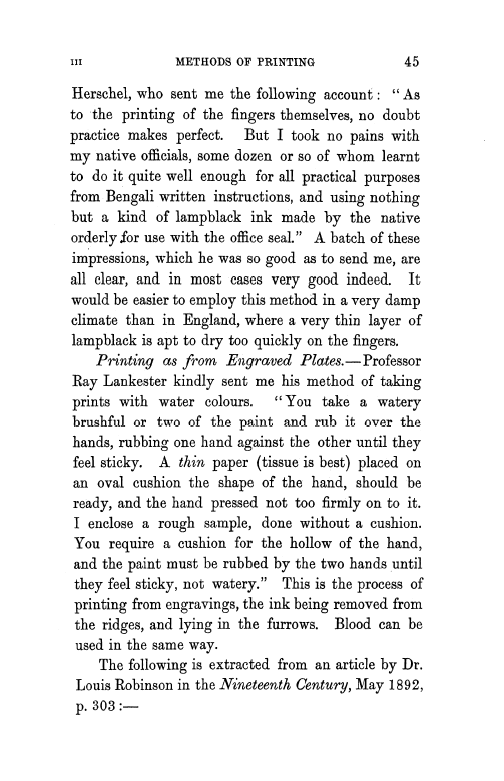| ||||||

OCR Rendition - approximate
III METHODS OF PRINTING 45 Herschel, who sent me the following account : " As to the printing of the fingers themselves, no doubt practice makes perfect. But I took no pains with my native officials, some dozen or so of whom learnt to do it quite well enough for all practical purposes from Bengali written instructions, and using nothing but a kind of lampblack ink made by the native orderly for use with the office seal." A batch of these 1 impressions, which he was so good as to send me, are all clear, and in most cases very good indeed. It would be easier to employ this method in a very damp climate than in England, where a very thin layer of lampblack is apt to dry too quickly on the fingers. Printing as from Engraved Plates. Professor Ray Lankester kindly sent me his method of taking prints with water colours. "You take a watery brushful or two of the paint and rub it over the hands, rubbing one hand against the other until they feel sticky. A thin paper (tissue is best) placed on an oval cushion the shape of the hand, should be ready, and the hand pressed not too firmly on to it. I enclose a rough sample, done without a cushion. You require a cushion for the hollow of the hand, and the paint must be rubbed by the two hands ,until they feel sticky, not watery." This is the process of printing from engravings, the ink being removed from the ridges, and lying in the furrows. Blood can be used in the same way. The following is extracted from an article by Dr. Louis Robinson in the Nineteenth Century, May 1892, p. 303
|